Queensland Sundew (Drosera) Cultivation

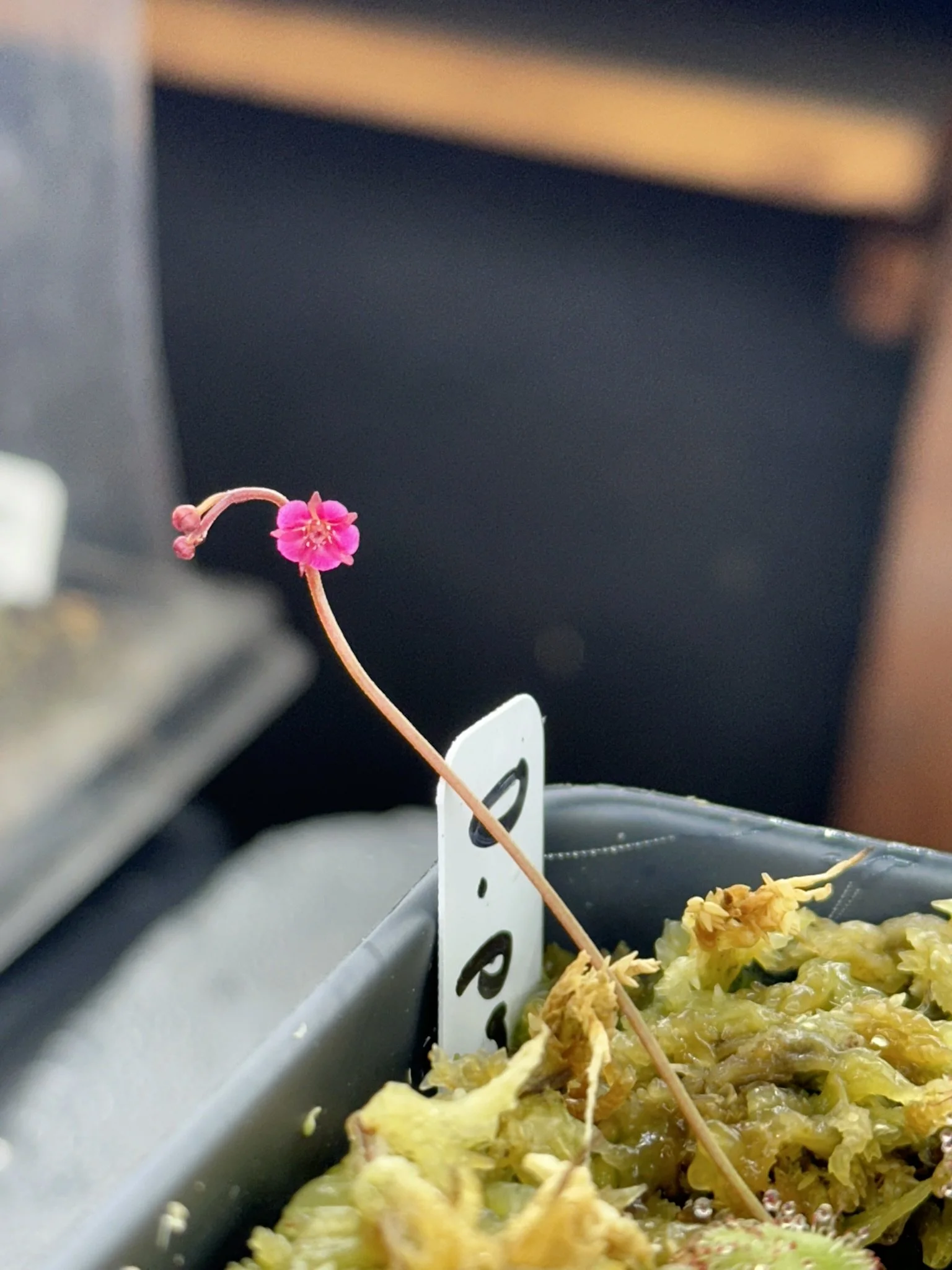
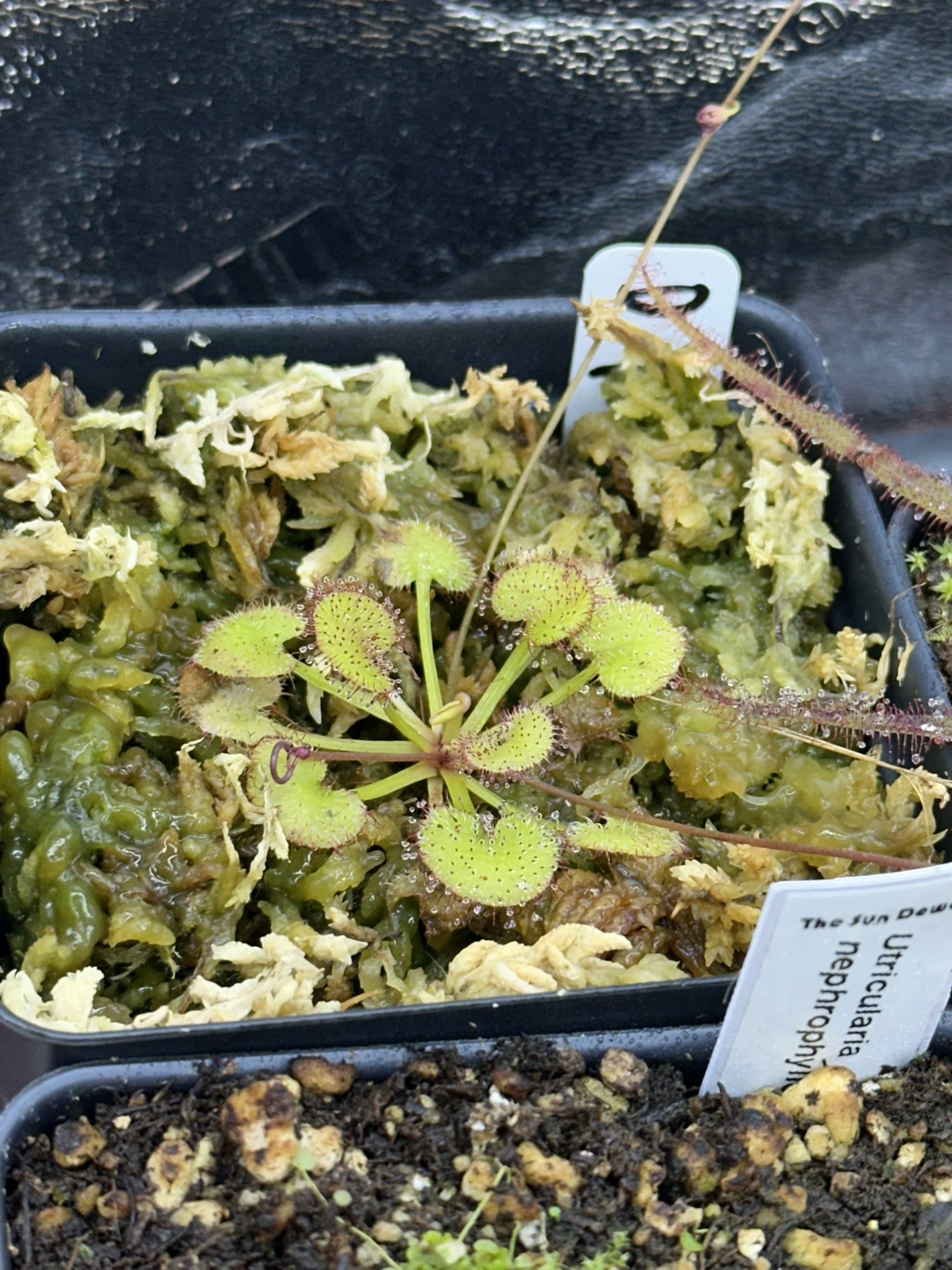
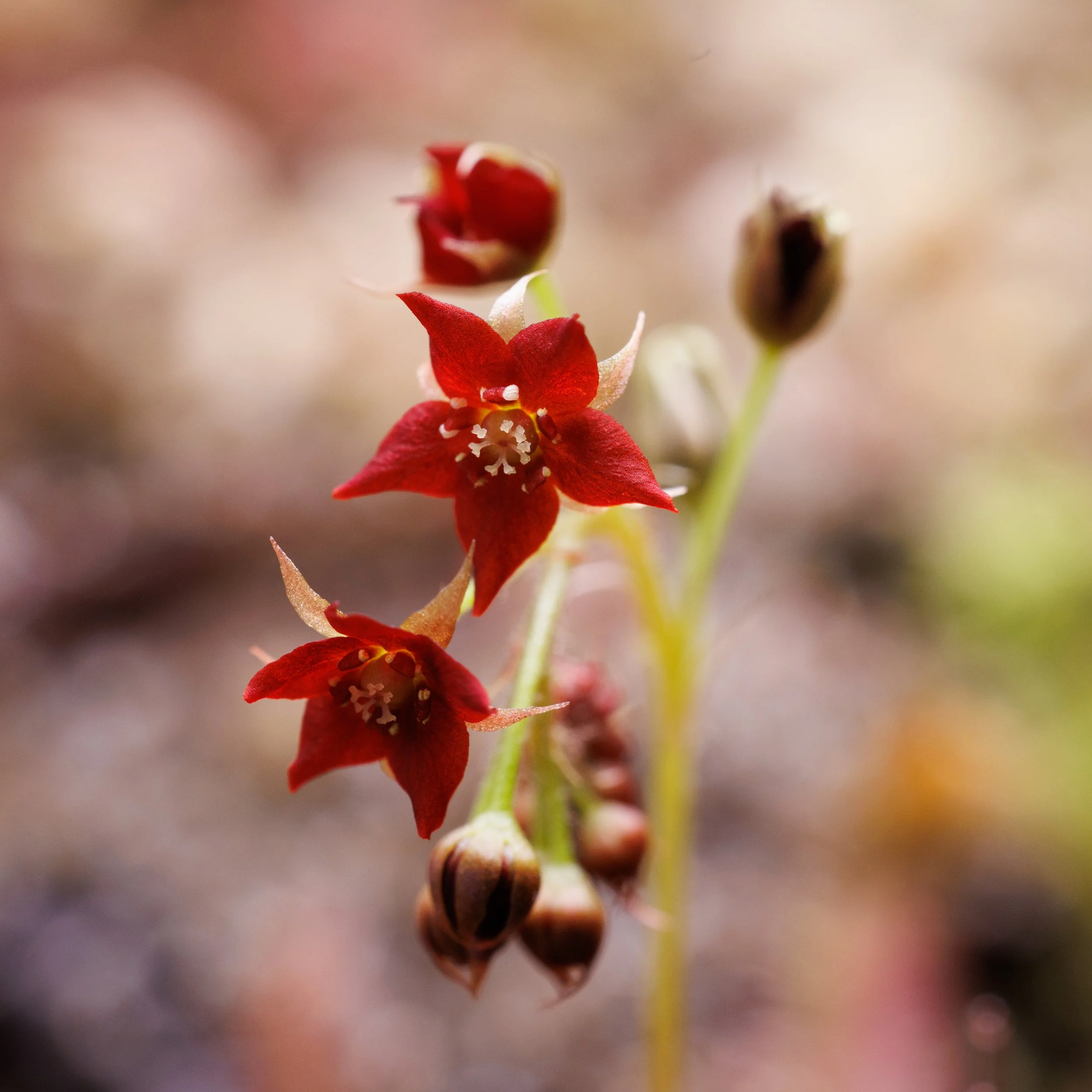
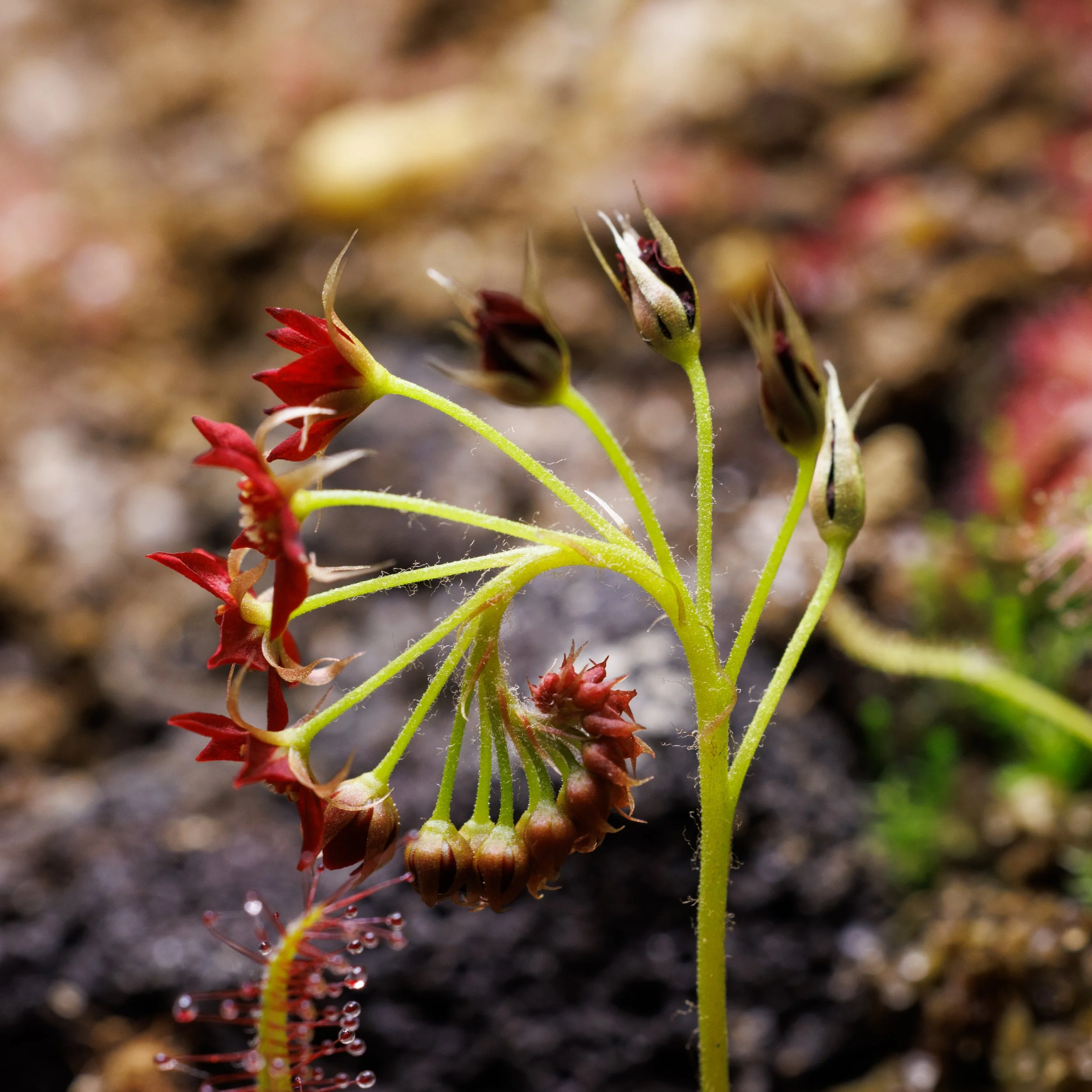
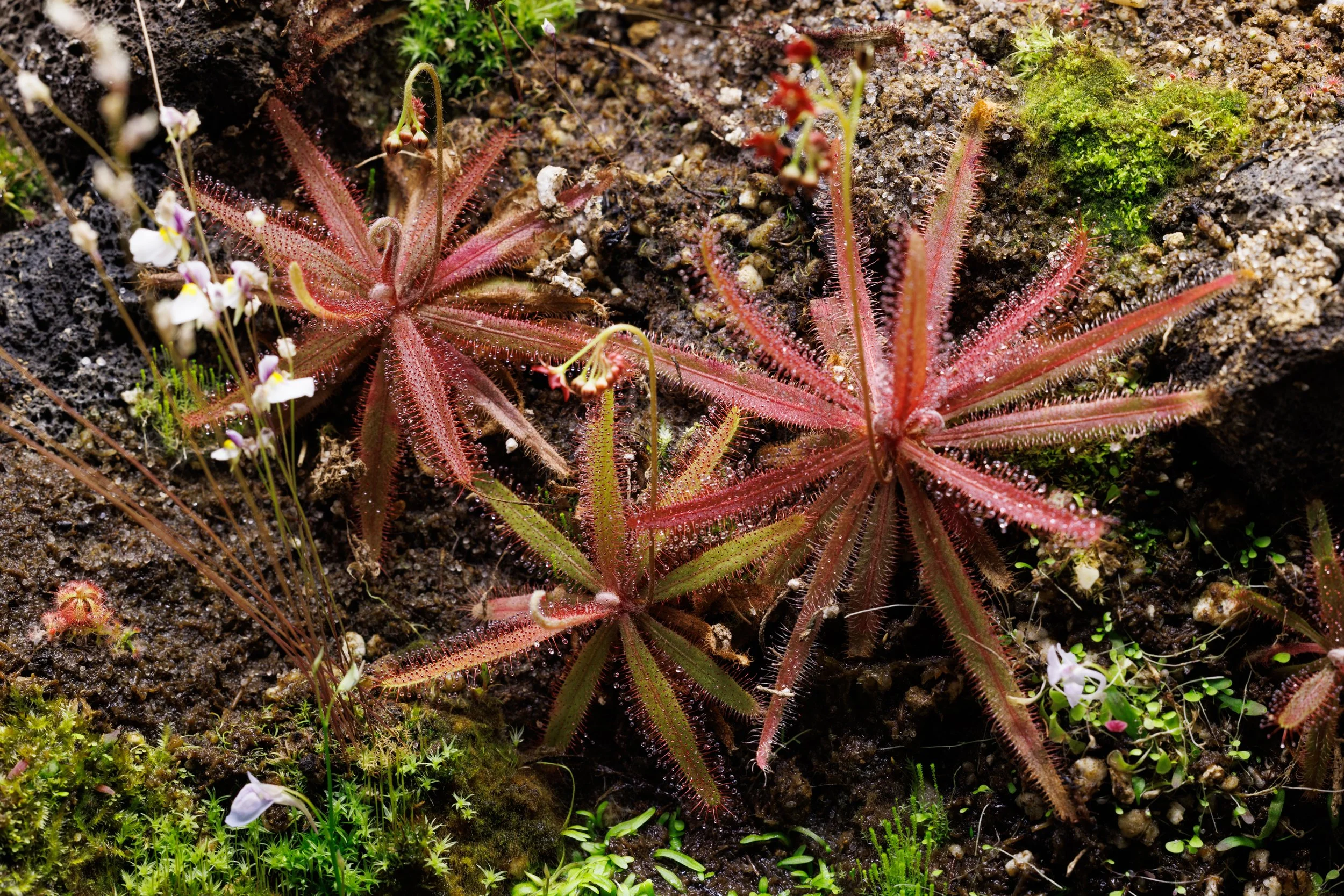
General Info:
Queensland Sundews are a group of 4 special Drosera (section Prolifera) species that are native to the shady rainforests of Queensland, Australia. The leaf shapes of each species will vary from lance-shaped (Drosera adelae), kidney-shaped (Drosera prolifera), and obovate (Drosera schizandra, Drosera buubugujin). In the wild, they grow in shaded habitats and will have a leafy green color and translucent red tentacles due to the low light levels. These odd species do not appear to be prolific carnivores, but are still able to grow to quite large sizes. Drosera adelae has forms that can grow leaves over 6” long and can look like an off-brand Drosera regia.
The habitat typically has cool temperatures and humid conditions, and these appear to be what works best in cultivation as well. Drosera adelae is the easiest species to cultivate. It can tolerate higher light levels, and can turn a bright red color in high light while remaining dewy and healthy. It will readily spread through lateral roots which sprout new plants along their length or wherever they emerge. It can clump and multiply quite quickly in ideal conditions, but can also grow decently in hotter and wetter environments.
Drosera prolifera and Drosera schizandra require less light, high humidity, and cool temperatures. I have liquified Drosera prolifera within a day or two by allowing it to become too hot and soggy. It will readily make plantlets on the scarlet purple flowers. Drosera schizandra is more finicky and sensitive, considered to be quite a difficult species to grow. There is also a hybrid between the two, Drosera x ‘Andromeda’ which is more forgiving. Drosera buubugujin is not in cultivation to my knowledge as it was only discovered a few years ago.
Cultivation:
Climate: Temperatures between 50-80F are best. These prefer higher humidity and will be much dewier at moderate to high humidity.
Light: Bright Shade or Indirect Sun, but these are great under lights at around 10W per square foot. Drosera adelae is tolerant of high light levels if slowly acclimated. The other species cannot tolerate excessive light.
Water: These like to be moist, but not overly soggy. Don’t allow them to dry out. They can be grown using shallow trays. Only use distilled, reverse osmosis, or rainwater because tap water is toxic to carnivorous plants due to high mineral content and chlorine.
Soil: Soil can be 50% peat: 50% perlite for Drosera adelae, though most peat or sphagnum based mixes will be good. Most growers use long-fibered sphagnum moss for Drosera prolifera and Drosera schizandra. More drainage is helpful if the humidity is very high.
Feeding: These species can be sensitive to overfeeding, mostly because the food can rot on the leaves in high humidity. They have less capacity to handle food than other species, so feed lightly with fish food powder, or lightly spray with a dilute fertilizer (~200ppm) like Dynagro Foliage Pro or MaxSea.
Notes:
Drosera adelae is by far the easiest species of the group.
The small, colorful flowers are unique to all Drosera and do not readily make seed, even when cross pollinated.
These are some of the only Drosera that tolerate and actually prefer low light levels, making them great in areas that have less light.